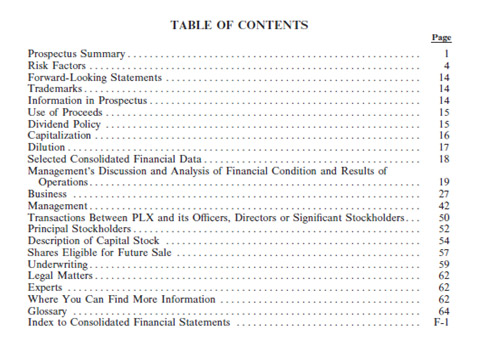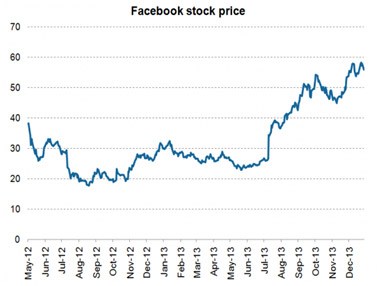Understanding IPOs
An Initial Public Offering(IPO) is essentially when a company issues stock for the first time and arises when the company decides to go from being a private company to a public company. Companies are generally categorized as private or public – a private company normally has a few shareholders and are not obligated to publish their financial accounts. The capital pool of a lot of private companies tend to be limited as it is influenced by the resources of the few shareholders. As the company grows and evolves, the demand for capital also grows. While the additional capital can be sourced by bank loans and other borrowing mediums, many companies opt to go public and issue an IPO. By going public, the company lists their shares on a public stock exchange and will be required to adhere to certain stipulations and rules. The listing of shares enables the company to raise cash that can be used to fund the company’s capital expenditure.
An IPO is a great investment, however, as an investor, you must do your homework first before you decide to jump in. The companies that issue IPOs have not previously traded on public stock exchanges, thus information about the company may be limited, and in turn analyst coverage. A major source of information would be the company’s prospectus – this document contains vital information about the company, the securities being offered, the terms of the offering and other information that will be critical for investors to know when they are deciding to buy the IPO.
It is recommended that you do not rely solely on the prospectus for information about the company as while companies try to fully disclose all information in their prospectus, there is the possibility that the information contained is not fully unbiased. The internet is a valuable source of getting information on almost anything. Search the internet for any information on the company also include any past press releases and any news or stories on the company’s operations or management in the local newspaper. Information on the industry in which the company operates in should also be researched. Equipping yourself with as much information about the company or any asset you are planning to buy is crucial in making any wise investment decision.
As it pertains to the prospectus, please make the effort to you read it carefully and if possible, seek the help of a Financial Advisor for any questions you may have. When you are reading the prospectus, you should ideally try to obtain answers to three basic questions:
- What the company does or is proposing to do?
- Why it’s making the offer?
- How it’s going to spend your money?
While the prospectus is a lengthy document, it normally follows a certain pattern. A prospectus is normally divided into the following sections:
Use of proceeds – the company will normally specify how the money from the IPO will be used.
Selected Financial Data – a tabular summary is provided of the company’s historical financial data. This presentation is geared towards providing investors with key financial information and to help investors in identifying any trends. The financial data presented normally spans the most recent five years and any interim results.
Management Discussion and Analysis – this section is a narrative on the company in terms of its background and how it came into being. It also outlines the company’s scope of operations and an analysis of the company’s financial results from year to year.
Business – the company’s products and services are described in this section. In addition, a description of the company’s consumer markets, competitive strategies, competitive environment and the existence of any litigation is provided.
Management – information on the biographies of the company’s directors and executive officers is outlined in this section.
Principal stakeholders– information is presented on the ownership of the company’s stock by its officers, directors and principal stakeholders.
Financial statements– this section is normally placed at the back of the prospectus and contains the company’s financial statements and accompanied notes to the financial statement.
Figure 1: Example of the outline of an IPO Prospectus

IPOs are frequently deemed speculative investments given their lack of share trading history. With no idea of the behavior of the company’s stock price and its liquidity, when you are purchasing an IPO, you have nothing to compare future price movements to.
In addition, more often than not, many companies that decide to go public and issue an IPO are young and operate in immature or pioneering industries with an equally new product or service.
Thirdly, there is usually a lot of hype surrounding an IPO and anticipation is at an all-time high. Consequently, interest and demand for the company’s IPO often tend to outstrip supply and push up the stock price to unreasonable levels. Investors who unfortunately get caught up in the euphoria are often disappointed with their returns.
Things to Note
The IPO price or public offering price is NOT a reflection of the market price as the stock would not have begun trading on the stock market as yet. The IPO price is determined by the company in consultation with the particular underwriters and takes into account various factors including market conditions, the strength of the company’s financials and investor confidence. Once the share begins to trade, the trading price may vary significantly from the IPO price and can be higher or lower than the IPO price.
Similar to seasoned equity, the trading price of shares issued in an IPO tends to be volatile. However, the degree of volatility tends to be more acute for IPOs given the existence of lockout periods. A lockup period refers to a stipulated time period in which specified holders including insiders and holders of majority stakes of the company’s shares are not allowed sell any of their shares. This contractual caveat seeks to ensure that the market is not flooded with too much supply of the company’s stock, which can drive the price downwards. Once this period has expired, the share price can decline as the supply of shares increases.
One of the most popular IPO’s of late was that of Facebook – the social media giant. On May 18 2012, Facebook‘s share price opened at US$38. Within 30 seconds, roughly 82 million shares were traded that climbed to 110 million within 7 minutes after the opening and reached a high of $45. THAT’S A WHOPPING 18% RETURN IN SEVEN MINUTES!!At the end of the day, Facebook’s share prices closed at $38.23 and created a new record having 458 million shares traded on its first day. Over the next couple of months, Facebook’s share price fell more than 50%. It took more than a year for its share price to recover from this decline and trade above the $38 listing price.
Figure 2: Facebook share price (May 2012 to December 2012)

It is important to understand that one of the primary reasons that companies goes public is to raise money. In order to raise as much money as they can, they might create a lot of excitementsurrounding its IPO issue. Since IPOs happen only once, it is normally pitched as a “golden and once in a lifetime opportunity”. It’s important to not buy a stock just because it’s an IPO – do your homework and research and ensure that it is a good and sound investment. Be mindful of the potential risk you are exposing yourself to – especially the market risk. While some IPOs share price have run up considerably, some have also fell sharply. Be wise and don’t get caught up in the hype.
You should consult with a Financial Advisor at the UTC, who can assist you in planning major life decisions and events.